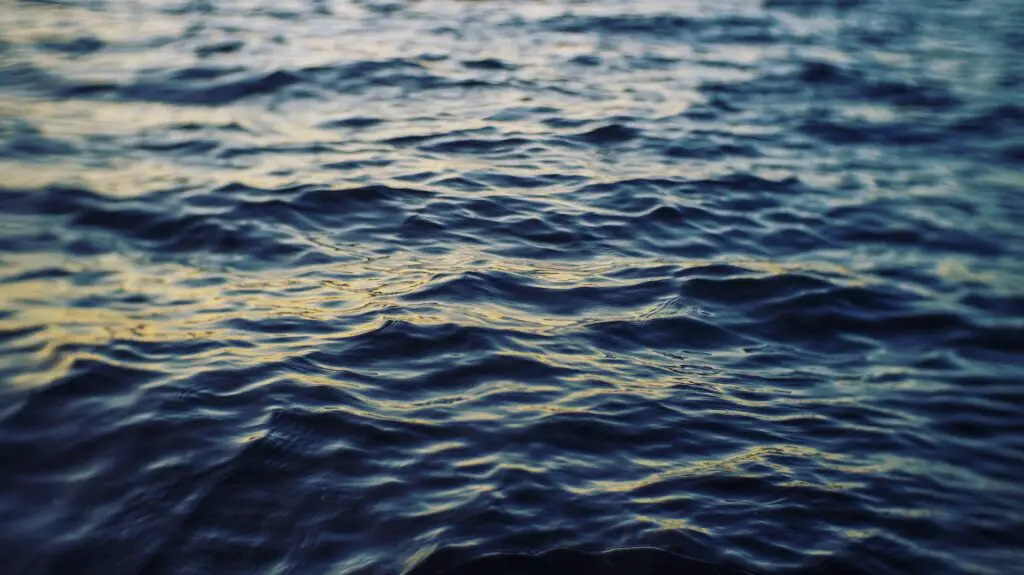The different types of lakes include oligotrophic lakes, mesotrophic lakes, eutrophic lakes and dystrophic lakes.
In this article, we look into the different types of lakes, what aquatic life they support, differences in their water quality, and also the challenges they face.
Types of lakes
Oligotrophic lakes

In oligotrophic lakes, the water is typically deep and clear, what allows sunlight to penetrate deeper into the water column. Reaching the plants, it enables their growth, which further provides habitats for fish, invertebrates, and other organisms.
One of the primary factors allowing oligotrophic lakes to form is the geology of the surrounding landscape. These lakes formed in regions with rocky or sandy substrates, which have low nutrient content. As a result, the runoff and inflow of nutrients into the lake are minimal.
The limited nutrient supply restricts the growth of algae, resulting in a lower abundance of phytoplankton compared to other lake types. However, oligotrophic lakes are home to various fish species, including trout, whitefish, and char, which have adapted to the low nutrient conditions.
The water in oligotrophic lakes is typically well-oxygenated and the pH levels are often neutral to slightly acidic.
Mesotrophic lakes
Mesotrophic lakes are dynamic freshwater ecosystems that exhibit moderate nutrient levels, being a balance between oligotrophic and eutrophic lakes.
In mesotrophic lakes, the nutrient levels are neither too low nor too high, allowing for the growth of a variety of aquatic plants such as water lilies, pondweeds, and cattails. These plants in turn provide both habitats and food sources for a range of animals, including fish, amphibians, and invertebrates.
The water quality in mesotrophic lakes is characterised by relatively clear waters with moderate levels of algae. While they may not have the crystal-clear clarity of oligotrophic lakes, mesotrophic lakes still offer suitable conditions for underwater visibility and support a healthy ecosystem.
Fish species commonly found in mesotrophic lakes include carp, pike, and perch, which thrive in the nutrient-rich environment. Additionally, a diverse community of insects, crustaceans, and mollusks contribute to the overall biodiversity of these lakes.
Summarizing, mesotrophic lakes exhibit moderate nutrient levels and support a diverse range of aquatic life and plant species. Their balanced ecosystem dynamics make them valuable habitats within the freshwater landscape.
Eutrophic lakes
Eutrophic lakes are freshwater ecosystems with high nutrient levels, resulting in excessive algal growth and decreased water clarity. These nutrient-rich conditions support a specific set of aquatic life and plant species.
The high nutrient availability promotes the proliferation of algae, leading to algal blooms and potentially harmful cyanobacterial growth. This abundance of algae can outcompete other aquatic plants and hinder the overall biodiversity of the lake.
While eutrophic lakes may have reduced water clarity due to algal blooms, they still support a variety of fish species e.g carp or catfish. These are robust fish species that can withstand the nutrient-rich environment and temporarily decreased oxygen levels. .
Aquatic plants in eutrophic lakes include emergent species like reeds and rushes, as well as floating plants such as water lilies and duckweed. These plants provide a nice habitat for various organisms, including insects, amphibians, and birds.
Dystrophic lakes
Dystrophic lakes are unique freshwater environments characterised by their brownish or tea-colored waters. These lakes occur in areas with high levels of dissolved organic matter, resulting from decaying plant material and the presence of wetlands.
The water in dystrophic lakes is typically acidic and nutrient-poor, limiting the growth of many aquatic plants. However, certain plant species like sphagnum moss and water lilies can thrive in these conditions.
Because of the high levels of disoslved organic matter, dystrophic lakes support a diverse community of aquatic life, including several fish species, invertebrates like dragonflies, water beetles, and snails are also commonly found. They also provide essential habitat for migratory birds.
Dystrophic lakes may undergo a process called paludification, where they gradually transition into wetland ecosystems. Paludification occurs due to the accumulation of organic matter, such as decaying plant material and peat, in the lake basin over time.
Challenges
Lakes face numerous challenges from human activities. One of the significant issues is pollution. Pollution can enter lakes from industrial, agricultural, and urban sources. These introduced pollutants can disrupt the balance of the lake ecosystem, leading to water quality degradation, harmful algal blooms, and if persistent, decline of aquatic species. Recently there was an ecosystem catastrophe on the border between Germany and Poland, where thousands of fish and other aquatic organisms were decimated.
Human alteration of the landscape is another concern. Deforestation, urbanization, and land development can result in increased sedimentation and runoff into lakes, negatively impacting water clarity and quality. Additionally, the construction of dams and water diversions can alter natural water flow patterns, affecting the health of lakes and their associated ecosystems.
Overexploitation of fisheries is another issue. Unsustainable fishing practices can deplete fish populations and disrupt the food chain within the lake.
Climate change poses yet another challenge. Rising temperatures, altered precipitation patterns, and increased frequency of extreme weather events can impact lake ecosystems. These changes can affect water levels, oxygen levels, and species distribution, leading to the loss of biodiversity and ecological imbalances.
It is important for us to recognize and address these challenges. Implementing effective pollution control measures, promoting sustainable land management practices, regulating fishing activities, and mitigating climate change impacts are vital steps towards the preservation and conservation of the lake ecosystems.
In general, lakes are rich ecosystems that host a diverse range of aquatic life, each playing a role in maintaining the health of these habitats. Learning about the different types of lakes, the aquatic life they support, and the consequences that our actions have, is crucial for their conservation and management. By appreciating the wonders of wild lakes, we can work towards protecting these invaluable resources for future generations to explore and enjoy.


